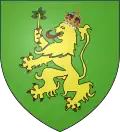Alderney Railway
The Alderney Railway on Alderney is the only railway in the Bailiwick of Guernsey, and the only working railway in the Channel Islands. (There is a standard gauge railway at the Pallot Heritage Steam Museum in Jersey, but this provides no actual transport link, only pleasure rides.) The Alderney Railway opened in 1847 and runs for about 2 miles (3.2 km), mostly following a coastal route, from Braye Road to Mannez Quarry and Lighthouse.
| Alderney Railway | ||||||||||||||||||||||||||||||||||||||||||||||||||||||||||||||||||||||
|---|---|---|---|---|---|---|---|---|---|---|---|---|---|---|---|---|---|---|---|---|---|---|---|---|---|---|---|---|---|---|---|---|---|---|---|---|---|---|---|---|---|---|---|---|---|---|---|---|---|---|---|---|---|---|---|---|---|---|---|---|---|---|---|---|---|---|---|---|---|---|
| ||||||||||||||||||||||||||||||||||||||||||||||||||||||||||||||||||||||

The railway is run by volunteers and usually operates during summer weekends and bank holidays.
Stations
Rolling stock
Current

The current stock is:
- former London Underground 1959 Tube Stock cars nos. 1044 and 1045,[1]
- a Vulcan Drewry 0-4-0 diesel locomotive no. D100 Elizabeth, bought in 1985.[2]
- a Ruston & Hornsby 0-4-0 diesel Molly II
- six Wickham rail cars.
Molly II is currently awaiting modification to her coupler system, so she can haul the London Underground stock. However, this cannot happen at the moment due to the fact she is not yet owned by the Alderney Railway company.
Sheds to house the engines and railway stock were built at Mannez quarry in 1997 and 2008[2]
British Admiralty
1854–1923. (The railway was, presumably, owned by some other department of the British Government from 1847–1854.)
| Name | Date built | Builder | Works No. | Wheels | Cylinders | Notes | Withdrawn |
|---|---|---|---|---|---|---|---|
| Veteran | 1847 | ? | ? | 0-6-0 | Inside | arr. 1847 | ? |
| Fairfield | 1847 | ? | ? | 0-6-0 | Inside | arr. 1847 | ? |
| Waverley | ? | Henry Hughes of Loughborough[3] | ? | 0-4-0ST | Outside | - | 1889 |
| Bee | ? | ? | ? | 0-6-0T | ? | - | ? |
| Spider | ? | ? | ? | 0-6-0T | ? | - | ? |
| Gillingham | ? | Aveling and Porter | ? | 0-6-0TG | ? | arr. 1893 | 1893 |
| No.1 | 1880 | Hunslet | 231 | 0-6-0ST | Inside | arr. 1893 | 1923 |
| No.2 | 1898 | Peckett | 696 | 0-4-0ST | Outside | arr. 1904 | 1923 |
Channel Islands Granite Co Ltd
1923–1940.
This company took over the railway in 1923, together with locomotives No.1 and No.2. No.1 was returned to England and replaced by Manning Wardle 0-6-0ST Nitro.
German occupation
1940–1945
No.2 and Nitro were commandeered by the Germans and are believed to have been shipped to Cherbourg in 1943 or 1944. The Germans lifted part of the standard gauge line and replaced it with a metre gauge line, worked by two Feldbahn 0-4-0 diesel locomotives.
British Home Office
1945–?
The line was restored to standard gauge in 1947–1949 and the following stock was used:
- Sentinel 4wVBT Molly, in service from 1947, withdrawn 1958. May have been converted to a mobile sand-blaster, which was still extant in 1980.[4]
- Cowans Sheldon steam crane
- Ruston & Hornsby 0-4-0 diesel Molly II
- Wickhams Type 27A trolleys
Alderney Railway Co Ltd
1980 onwards
- Bagnall 0-4-0ST J.T. Daly, steam engine built in 1931, in service 1982 until 1996 when sold to the Pallot Heritage Steam Museum, Jersey[2]
- 1938 steel tube stock from Bakerloo and Northern lines, badly rusted and returned to UK in 2000 as spares.[2]
Notes
- arr. = date arrived on Alderney
- T = tank locomotive
- ST = saddle tank locomotive
- TG = geared tank locomotive
- VBT = vertical boiler tank locomotive
History
The railway was built by the British Government in the 1840s and opened in 1847. Its original purpose was to carry stone from the eastern end of the island to build the breakwater and the Victorian era forts.
There were three Royal visits by Queen Victoria and Prince Albert to Alderney. On the first on 8 August 1854, the Royal couple rode on the railway, a horse drawn tender.
See also
References
- "Enthusiasts visit Alderney Railway". The Railway Magazine. 154 (1, 290): 80. October 2008. ISSN 0033-8923.
- "alderney railway society". Alderney Railway Society. Retrieved 10 January 2021.
- "Alderney Breakwater". Irsociety.co.uk. Retrieved 4 December 2017.
- "(Photo) Sentinel 4wVBT converted to a mobile sand-blaster (1980)". Johnlawontherails.fotopic.net. Archived from the original on 26 June 2010. Retrieved 4 December 2017.
Bibliography
- Railways of the Channel Islands, A Pictorial Survey compiled by C Judge, published by The Oakwood Press 1992, ISBN 0-85361-432-6
External links
- Alderney Railway official website
- A fan's website
- Photographs of Channel Islands railways (including Alderney)
- Rail 608 31 December 2008 magazine pages 68–69 feature on the Alderney Railway
- The Alderney Breakwater by M. Swift a detailed account in THE INDUSTRIAL RAILWAY RECORD No. 52 – pages 170–173 FEBRUARY 1974 issue
